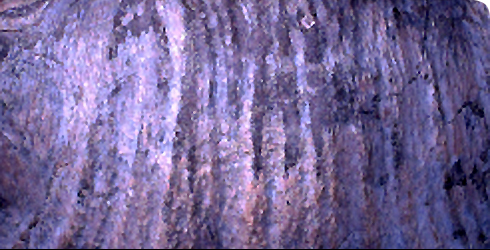Palaeobiology
Gigantoproductus giganteus was ,as its name suggests, the largest of the brachiopods, often attaining a width of over 30cm with some individuals growing larger still.
As is characteristic of the majority of productid brachiopods, it had strongly concavo-convex shells, with the umbo region of the pedicle valve being grossly enlarged and thickened to give it greater mass.
Much of the morphology of G. giganteus was developed to give greater stability and enable it to maintain its position on the seafloor; a lateral pair of ‘ears’, a covering of fine spines on the pedicle valve (approx. 1mm in diameter) to anchor the animal into the substrate and of course the heavy and thickened umbo region of he pedicle valve.
Like all other brachiopods, Gigantoproductus was a sessile suspension feeder. It had a very simple mode of life, it would remain in one spot by means of its overall morphology and remain there feeding on suspended material in the water column.
Feeding was by means of a soft, ciliated, fleshy ribbon-like structure to filter food particles from the water column. This structure, called a lophophore, was found in between the valves.
Very little is known about the overall morphology of the lophophore in fossil productids as soft tissue preservation is extremely unlikely in the kinds of habitats G. giganteus lived. However, the trilobite shape of adult productids suggests that inhalant and exhalent currents were being set up with the shell cavity and that the lophophore was used to maintain this internal partitioning in order to maximise feeding efficiency.
The reproductive habits of Gigantoproductus can never be known, however extant brachiopods and their reproduction indicate that it would have reproduced by dispersal spawning. Gametes would have been released into the water column by the different sexes. It is unknown what, if any, factors regulated this. However it is possible that it may have been tidally or seasonally regulated. Perhaps even a lunar influence as seen with many reef associated organisms today.
